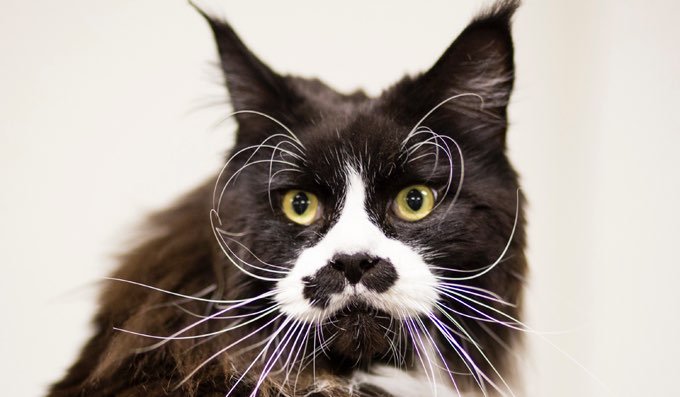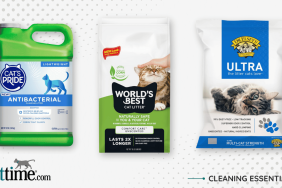Constipation and Obstipation in Cats
Constipation is a condition characterized by infrequent, incomplete, or difficult defecation, with passage of hard or dry bowel movements (feces). Obstipation is pronounced constipation that is difficult to manage or does not respond to medical treatment. Obstipation is caused by prolonged retention of hard, dry bowel movement; defecation becomes impossible for patients with this condition. This is a relatively common condition in cats.
Symptoms and Types
- Straining to defecate with small or no fecal volume
- Hard, dry bowel movement
- Infrequent or complete lack of defecation
- Small amount of liquid stool with mucus in it – sometimes with blood present, produced after prolonged straining to defecate (known as tenesmus)
- Occasional vomiting
- Lack of appetite
- Depression
- Large intestine (colon) filled with hard, compacted fecal material
- Swelling around the anus
Causes
- Swallowed bones
- Swallowed hair
- Foreign material
- Excessive fiber in the diet
- Inadequate water intake
- Lack of exercise
- Trauma
- Intestinal blockage
- Paralysis/muscle weakness – muscles of intestine are unable to move fecal material
- Low blood calcium
- High levels of parathyroid hormone (important in calcium absorption)
- Low levels of blood potassium
- Low levels of thyroid hormone in the blood
- Change of environment – hospitalization, move, dirty litter box
- Intercat aggression – cat is afraid to use litter box for fear of other cat
- Inability to walk to toileting area
Diagnosis
You will need to give a thorough history of your cat’s health, including a background history of symptoms, and possible incidents that might have led to this condition.
Your veterinarian will perform a complete physical exam on your cat, including a blood chemical profile, a complete blood count, an electrolyte panel and a urinalysis.
X-rays are crucial for visualizing the abdomen and intestinal tract in order to determine the severity of the impaction. Ultrasound imaging of the abdomen can return more precise images. Your veterinarian may also choose to use a colonoscopy (a diagnostic tool that is inserted into the colon to visualize the interior) to diagnose and identify a mass, stricture, or other colonic or rectal lesion.
Treatment
If your cat is dehydrated or obstipated (has difficult to manage constipation or does not respond to medical treatment), then it will need to be treated on an inpatient basis. Fluid therapy will be given, and if your cat is taking any medications that may be causing the constipation, they will be discontinued and/or replaced.
Dietary supplementation with a bulk-forming agent (such as bran, methylcellulose, canned pumpkin, psyllium) often is helpful, though these agents can sometimes worsen fecal distension within the colon. If this occurs, you will need to feed your cat a low residue-producing diet.
After your doctor has determined that your cat is sufficiently rehydrated, manual removal of the feces, with your cat under general anesthesia, will be conducted. If the impaction is not too severe, enemas may help to loosen or dislodge the impaction, but generally, the impaction must be removed manually. Your veterinarian may do this by hand, or with forceps. If the condition has been chronic, your veterinarian may need to perform a surgical procedure to remove part of the colon. This type of surgery is known as a subtotal colectomy, and may be required with recurring obstipation, or when circumstances suggest that the colon has been irreversibly damaged.
Living and Management
Monitor the frequency of your cat’s defecation and stool consistency at least twice a week initially, and then weekly or biweekly. Contact your veterinarian if you notice very hard, dry feces, or that your cat is straining while defecating. You should contact your veterinarian if you note diarrhea, since this can quickly lead to dehydration. To prevent a recurrence, feed your cat a veterinarian-approved diet and be sure to keep your cat active.
This article originally appeared here on PetMD.com.









